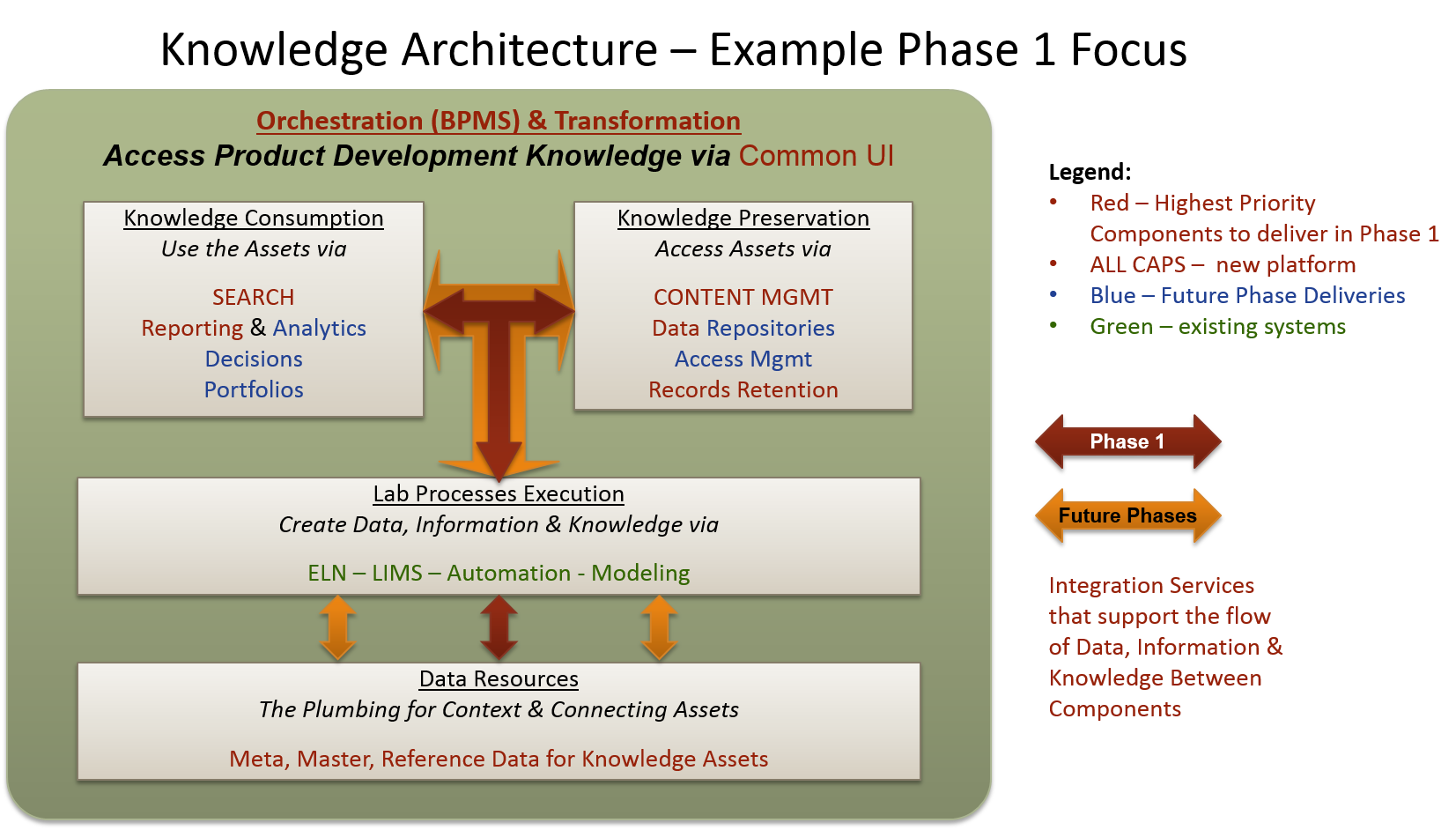Software Selection Process for Achieving Strategic Advantage from Knowledge in Pharmaceutical R&D
Business Challenges
Selecting the right software for a single business need can be challenging. Selecting multiple new software applications to support a major business program can seem an impossible task. The risks increase as one has to assess the best fit for each need, ensure cross-platform integration capabilities, and determine the optimal order to introduce change from each application. One of our global pharmaceutical clients had to make these choices as part of implementing a major Knowledge Management Strategy for their Pharmaceutical Development group.
Pharmaceutical companies make large investments in very long R&D programs to development new drugs. It takes an average of 7 - 10 years to complete a successful product with full lifecycle costs ranging between $800M - $1B, with 20 – 30% of this time and cost consumed by the effort to find and react to queries on past outcomes to address various audits and reviews that occur along the way. The data, information, and knowledge created during the product’s lifecycle are vast in their size, scope, and diverse number of internal and external parties that generate and consume them.
Our client’s Pharmaceutical Development group owns a major component of the work that starts with the early stage drug candidates from discovery through to delivery and support of product manufacturing. This group requires the ability to quickly react to the evolving needs of Clinical Operations, Regulatory Authorities, and Manufacturing for many active trials over many years. Too often, past knowledge is difficult to find and effort is wasted repeating work to meet the needs of their customers. Our client conducted a detailed analysis and uncovered over 1,200 loosely managed instances where data, information, or knowledge is generated or consumed over the product lifecycle. We helped them gain approval for a major strategic initiative to effectively manage this knowledge. To get approval, we had to help them select the new technologies required and place them on their 4 – 5 year roadmap for implementation.
The ArborSys Solution
ArborSys helped our client determine which technologies to consider by using our proven business capabilities architecture process to prioritize the problem areas that needed to be addressed. Our architectural analysis approach helped uncover the overly complex and costly systems that were impeding the client’s knowledge capabilities. The existing governance model was not capable of providing the required support to deliver useful solutions. ArborSys helped the client to design a new governance model for the program that clearly aligned the value of its use to the business values targeted by the program.
The three highest priority areas of deficient business capabilities were identified via workshops using the future vision defined within the new knowledge architecture. Our architecture assessment immediately identified the technology gaps requiring new applications. To cover these gaps, the client would need to select a Business Process Management Solution (BPMS), Scientific Search Engine, and Content Management System. In this case study, we will focus on the BPMS selection.

Like many large companies, BPMS was existing shelfware at the client. The business was not able to understand how to apply the very abstract tool to their real world problems and had avoided using it. ArborSys used its expertise in BPMS to setup a cloud-based Proof of Concept (PoC) platform to take the client through how to rapidly define, iteratively develop, and actually use any BPMS to solve their lab data workflow problems. ArborSys provided the skills to conduct agile-based business analysis and iterative development to complete the PoC in three weeks. The client was provided with a detailed model for understanding BPMS as well as complete requirements to drive the selection of the right tool to support the highest priority projects.
Value Delivered
The client gained the required insight on how to evaluate BPMS to determine first that a BPMS was the right application to use to solve their lab data workflow needs as well as how the solution would fit within their new knowledge technical architectures. They also gained the required level of detailed requirements to use in making a final selection decision. As noted above, two other selection processes were underway at the same time. These processes used the same ArborSys tools and techniques to ensure consistency across the program for making the final decisions.
The result was our client was able provide their senior management with the level of detail needed to provide confidence in their choices. They were able to gain approval for the overall program funding and speed the startup based on our detailed implementation roadmap.
Want to learn more?
For more information about this case study or any of our services, contact us by email: sales@arborsys.com
Related Content
Related Offerings / Services
- Technology Selection Advisory Services
- Collaboration and Knowledge Management
- Pharmaceuticals Industry
